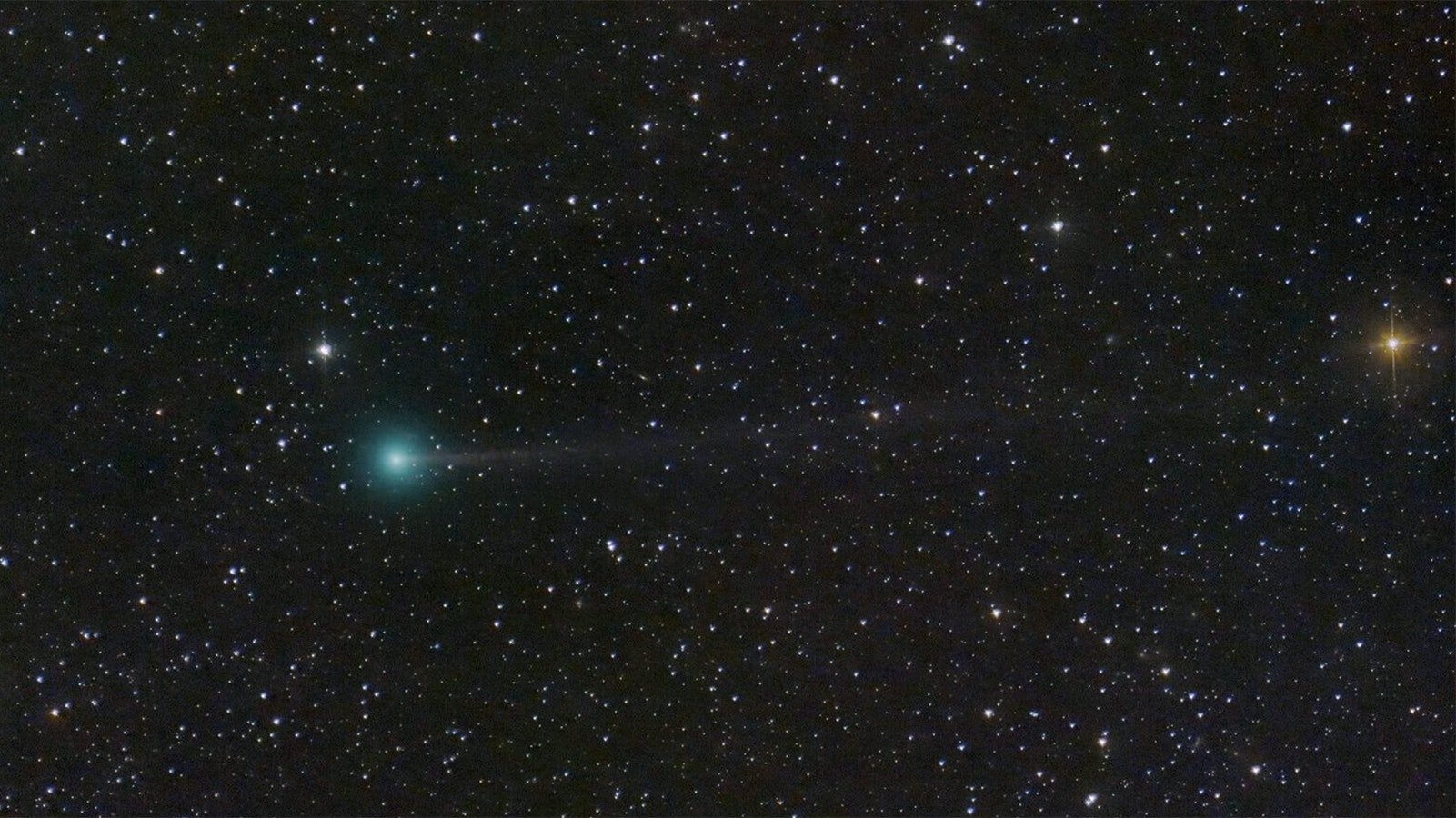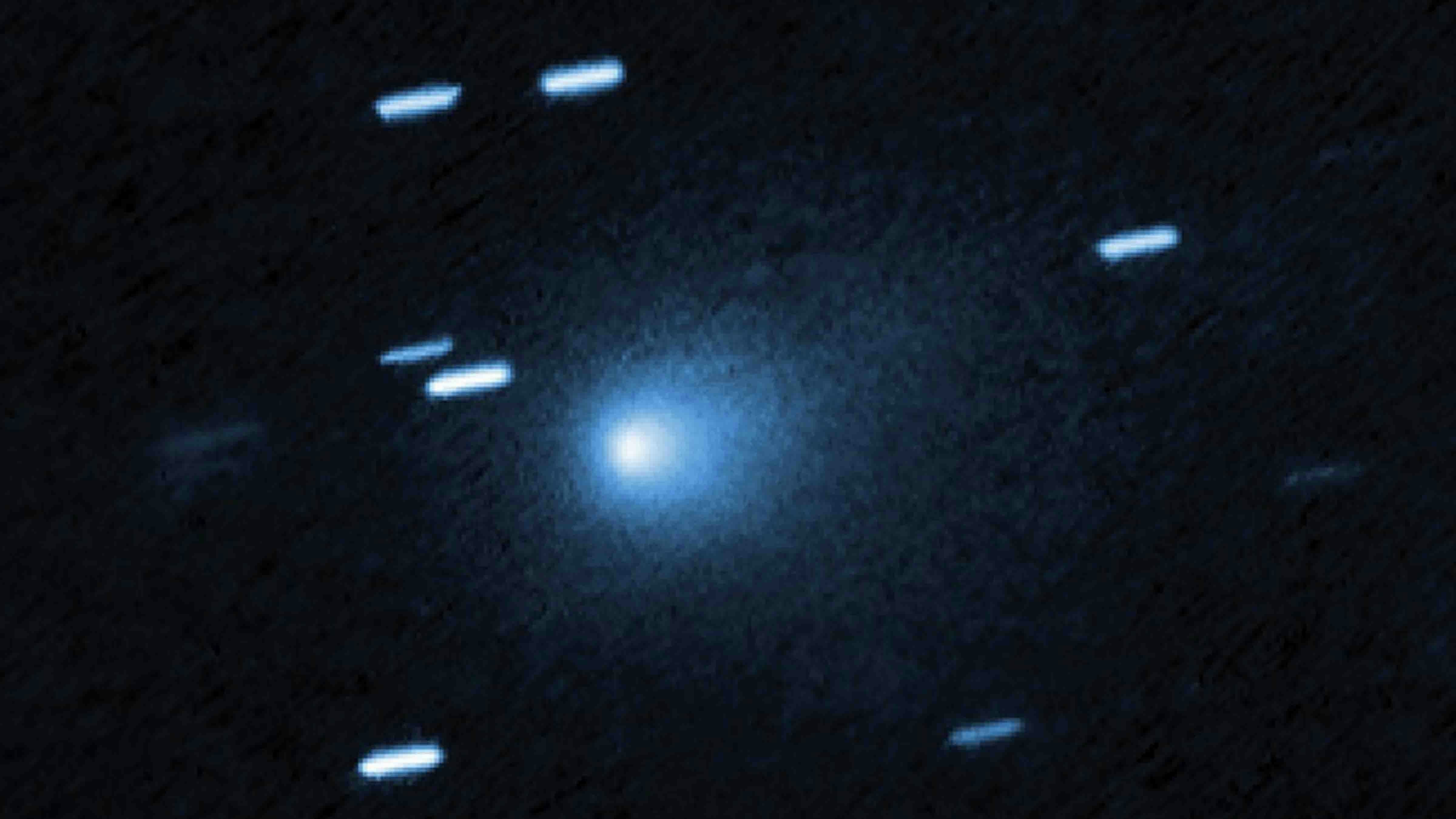Don’t look now, but a comet is hurtling toward Earth, but it’s not a doomsday scenario. We’re expecting it.
As the comet Nishimura slowly moves closer to Earth, Wyoming residents will get the chance to see the comet, but may find it difficult to spot in the night sky.
Comet C/2023 P1 was discovered by Japanese amateur astronomer Hideo Nishimura last month and was soon named in his honor. Astronomers worldwide have been following its progress and sharing where and when it will be visible.
“It’s in the constellation of Leo right now. For Wyomingites, we see Leo very often early in the mornings,” said Max Gilbraith, planetarium coordinator at the University of Wyoming Physics and Astronomy Department. “It will be consistently moving through Leo for the next week or so — through Leo’s head, basically.”
Catching A Comet
From now through Monday, the comet will be visible about 90 minutes before sunrise. Nishimura will be on the left side of Venus, getting lower and lower as each day progresses.
Venus isn’t hard to find since it’s the brightest object in the night sky other than the moon, Gilbraith said, adding the Moon might pose a problem for anyone hoping to see Nishimura.
“(The timing) lines up with the moon’s out, so it’s not ideal. Hopefully it sticks around long enough that we get the moon out of the way and we’ll have a nice comet here,” he said.
Starting Sept. 12, Nishimura will be visible in the western sky right after sunset. This is also when the comet will be at its brightest since that’s when it will be closest to Earth.
The comet will be at its brightest then when it makes its closest approach to Earth. This will also make it more difficult to spot since there will still be ambient light from sunset in the sky.
Star Light But Not So Bright
Even at its brightest, it will be difficult to spot the Nishimura comet without binoculars or a telescope.
“That brightness might only be magnitude 5, maybe just under. Magnitudes are on an inverted scale. Magnitude 6 is the dimmest thing the human cna pick up without a telescope,” Gilbraith said. “Venus, which is also near Leo in the sky right now, has a -4.8 magnitude. So (this is) quite a dim comet even compared to nearby stars.”
The closest star to Nishimura is Lamda Leo, which may be slightly brighter. For many, the comet will look just like the stars surrounding it.
“Sometimes we get spectacular comets with huge tails that stretch across the sky. That seems not to quite be that. It might look like a faint, fuzzy star to the naked eye,” he said.
Gilbrath said there will be a new moon that might make spotting Nishimura easier. For anyone who wants to try, it’ll be an early morning this week.
Nevertheless, Gilbrath encourages anyone who want to find the comet to give it a try.
“It’s still really fun to get out and see something that’s not a star,” he said. “In the next couple weeks, if you can get up early and look to the east, before ‘the dawn’s early light’ they talk about in The Star Spangled Banner, it should be at the same height as Venus in Leo’s head,” he said.
You could wait to see the comet the next time it passes by Earth. But Nishimura is a long period comet, which means it has an orbit longer than 100 years.
Nishimura last passed Earth around 1588. It’s next pass should be in the summer of 2456, about 433 years from now.
Andrew Rossi can be reached at arossi@cowboystatedaily.com.





